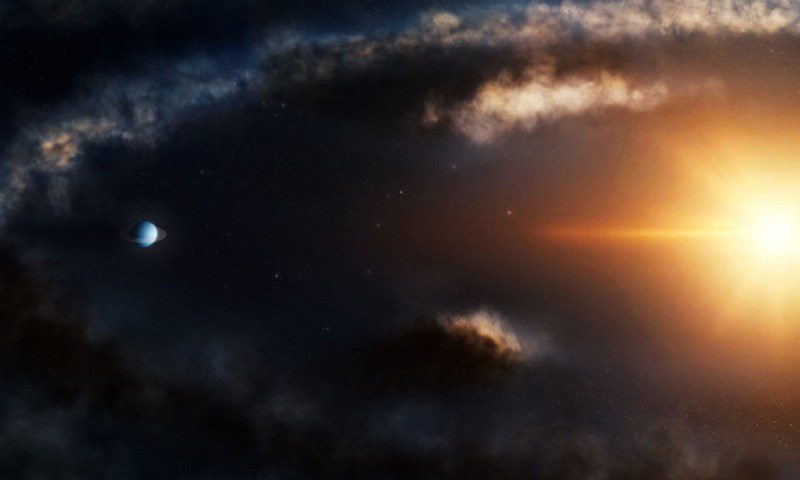
Photo: Harvard University / Disclosure
A group of Harvard astronomers have made a discovery that could lead to a new technology for discovering planets outside the solar system. Essentially, what they did was detect a debris field at Lagrange points in a young planetary system. Does it look greek? Calm down, we explain.
Currently, more than 5,000 exoplanets have been confirmed in our galaxy. Most of them have been discovered through the transit technique, which involves studying differences in the brightness of stars when a planet passes in front of them. In practice, this “mini-eclipse” formed by an exoplanet can be measured to confirm the existence of the object.
The problem with this type of method is that it only makes it possible to detect large planets, leaving most of the small, rocky planets like ours. Also, the exoplanet must be aligned with Earth to be discovered.
With the new discovery by Harvard astronomers, all of that could change. Using data from the ALMA observatory in Chile, the researchers found a ring of bright dust in the LkCA 15 system. It is located about 518 light-years from Earth, in the direction of the constellation Taurus.
The bright structure is located about 6 billion km from the star and is divided into two groups at an angle of about 120 degrees. This separation is important because it can be explained mathematically by the Lagrangian point theorem.
A new way to search for planets
When two celestial bodies – such as a star and a planet – are bound by gravity, they end up forming five points – called L1 to L5 – where the force of gravity cancels out. Any object that falls at these points ends up being at some kind of gravitational equilibrium point, as if it were “parked” in space.
The largest example is the Trojan asteroids, which share the orbit of Jupiter and are located at the L4 and L5 points on the planet. The James Webb Space Telescope is located at point L2 on Earth.
In the case of LkCA 15, the system is still forming, with most of its bodies located under a thick disk of dust and gas. However, the discovery of clusters of bright rings could indicate that a planet may be hiding under dust and about 60 degrees between them.
according to study Posted in Astrophysical Journalthe size of the planet should be between Neptune and Saturn, and its age should be about three million years – for comparison, the age of the Earth is 4.5 billion years.
in reportAstronomer Feng Long, who led the study, says the discovery could lead to the development of a new approach to searching for exoplanets by locating debris at Lagrange points, particularly in emerging star systems. This will make it possible to study how these stars are formed.
Recently, James Webb was also able to take the first direct image of a “baby” exoplanet, 385 light-years from Earth. As much as this planet was already known to astronomers, the research of Harvard scientists, as well as the image of the new NASA space telescope, can help validate new scientific methods for discovering planets that have not yet been detected by other conventional techniques.
